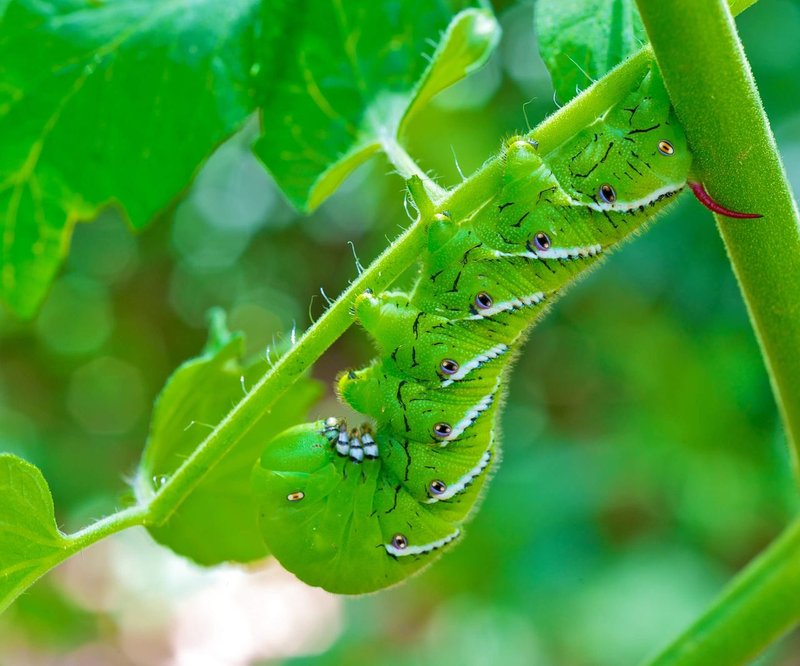
So, let’s chat about the economic impact of hornworms on market gardens. We’ll explore how these critters affect crop yields, the farmers’ bottom line, and what growers can do to keep hornworms at bay. It’s an important discussion, especially for anyone getting into market gardening or those who want to maximize their harvests without hitting a financial wall.
Understanding Hornworms and Their Habitat
Hornworms are the larvae of sphinx moths. They’re notorious in the gardening world, especially in places where tomatoes and peppers thrive. You might spot them easily due to their striking green bodies and the characteristic horn-like protrusion on their rear end.
These caterpillars love warm weather and lush environments. You’ll often find them lurking among the leaves of tasty plants, hiding in plain sight with their near-perfect camouflage. It’s fascinating, really. They blend in so well that even experienced gardeners might overlook them until significant damage has occurred. If you’re running a market garden, it’s crucial to keep an eye out for these guys before they turn into a bigger problem.
Damage to Crops: The Bottom Line
Hornworms can be devastating for crops. Here’s the thing: a single hornworm can eat an astonishing amount of foliage. For market gardeners, this is not just a gardening nuisance; it directly impacts profitability. If your plants aren’t getting the nourishment they need, your yield can decrease significantly.
Consider this scenario: a farmer discovers a few hornworms on their tomato plants. If left unchecked, those few can quickly become hundreds, and before you know it, the entire crop might be at risk. Losing a substantial portion of ripe tomatoes not only hurts today’s harvest but can also affect future sales if the plants fail to recover. For market gardeners, this could mean climbing costs due to reduced yields and lost revenue.
Preventative Measures and Management
Now, you might be wondering how to tackle this pesky problem. Prevention is key here. First off, regularly inspecting your plants can make a huge difference. Look under leaves and check for signs of hornworms. If you catch them early, you can remove them by hand. This simple practice can save you from a larger infestation down the line.
Alongside manual removal, consider introducing beneficial insects to your garden. For instance, ladybugs and parasitic wasps can help keep hornworm populations in check. You might also explore organic pesticides that target hornworms specifically without harming beneficial insects. The goal is to strike a balance and keep your garden healthy while addressing pest issues head-on.
Economic Losses: The Bigger Picture
When hornworms invade, it’s not just about losing a few plants; the economic implications can be extensive. If a market gardener experiences a significant loss in yield, this can lead to increased costs in various ways. Think about it: there’s the cost of replanting, possible delays in the harvest, and even the chance of losing customers if they can’t get the products they were hoping to sell.
Farmers may also face higher labor costs when they need to spend additional time managing pests. It’s like paying extra for a membership at the gym that you never wanted to join in the first place—frustrating and costly. All of this can add up quickly, impacting the overall profitability of the garden.
Market Competition and Hornworm Challenges
An economic impact worth noting is the competitive nature of the market garden industry. When one farmer suffers from hornworm infestations, they may fall behind competitors who manage pest control more effectively. This disparity can stretch beyond individual gardens and affect local market dynamics. Farmers who produce high-quality, pest-free crops will likely attract more customers, leading to better sales and healthier income.
This competition may also push farmers into relying more on chemical pesticides, raising debates within communities about sustainable versus conventional practices. The goal is to balance effective pest management while maintaining a healthy ecosystem. That way, being aware of hornworm threats doesn’t lead to over-reliance on potentially harmful solutions.
Exploring Sustainable Practices
Sustainable practices are becoming more popular in market gardening—partly in response to challenges like hornworm infestations. Using integrated pest management (IPM) strategies can help create a healthier ecosystem. IPM combines several methods, such as crop rotation, plant diversification, and natural predators, reducing reliance on chemical controls.
Another key aspect is educating other farmers and sharing best practices. When farmers collaborate and exchange knowledge about pest management, the entire community can benefit. Think of it as a little community support group. When everyone learns to manage hornworms efficiently, the collective impact can lead to thriving gardens and stronger local markets.
Hornworms might just be caterpillars, but their impact on market gardens can ripple through economics and community dynamics. By understanding their biology and damage potential, market gardeners can take proactive steps to minimize losses. From hands-on pest management to sustainable practices, there are ample ways to fight back.
In the world of market gardening, knowledge truly is power. Staying informed about pests like hornworms can help you protect your crops and, ultimately, your income. So, keep your eyes peeled, your garden healthy, and let’s keep those economic impacts in check! After all, a thriving market garden is not just about the plants—it’s also about the profits.

